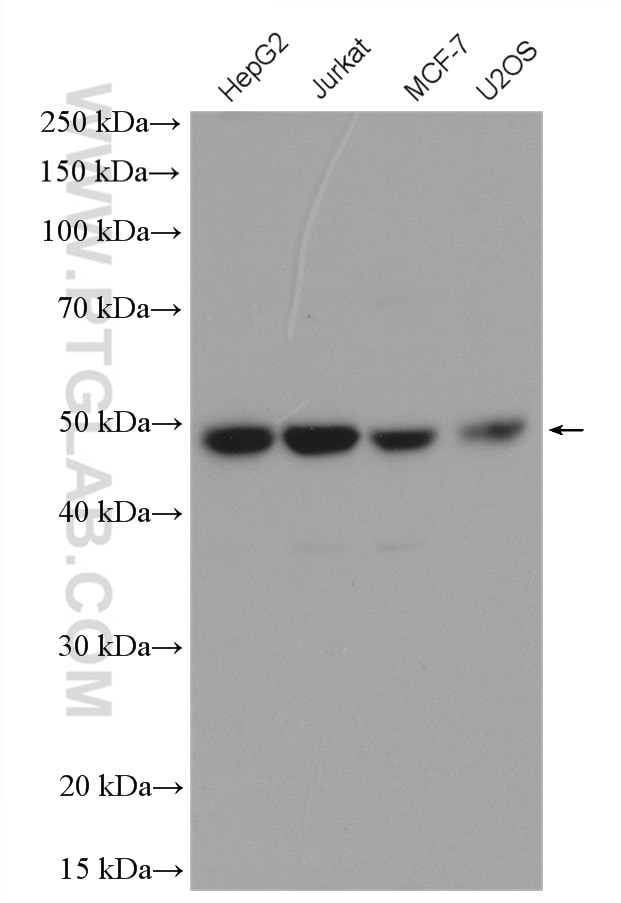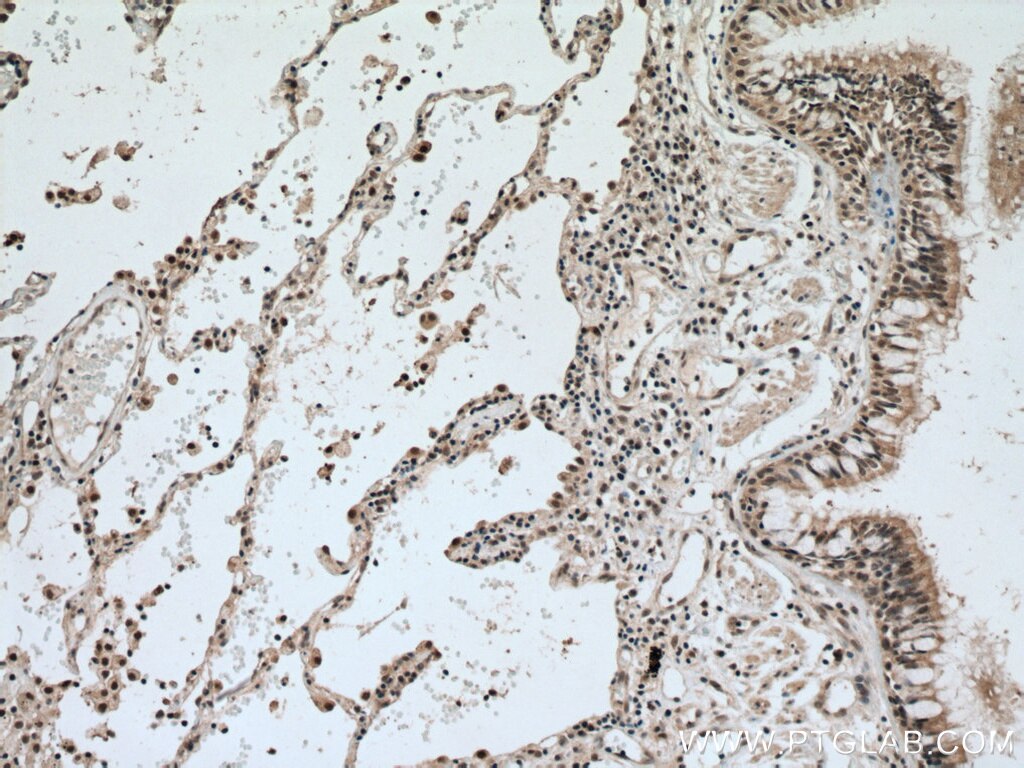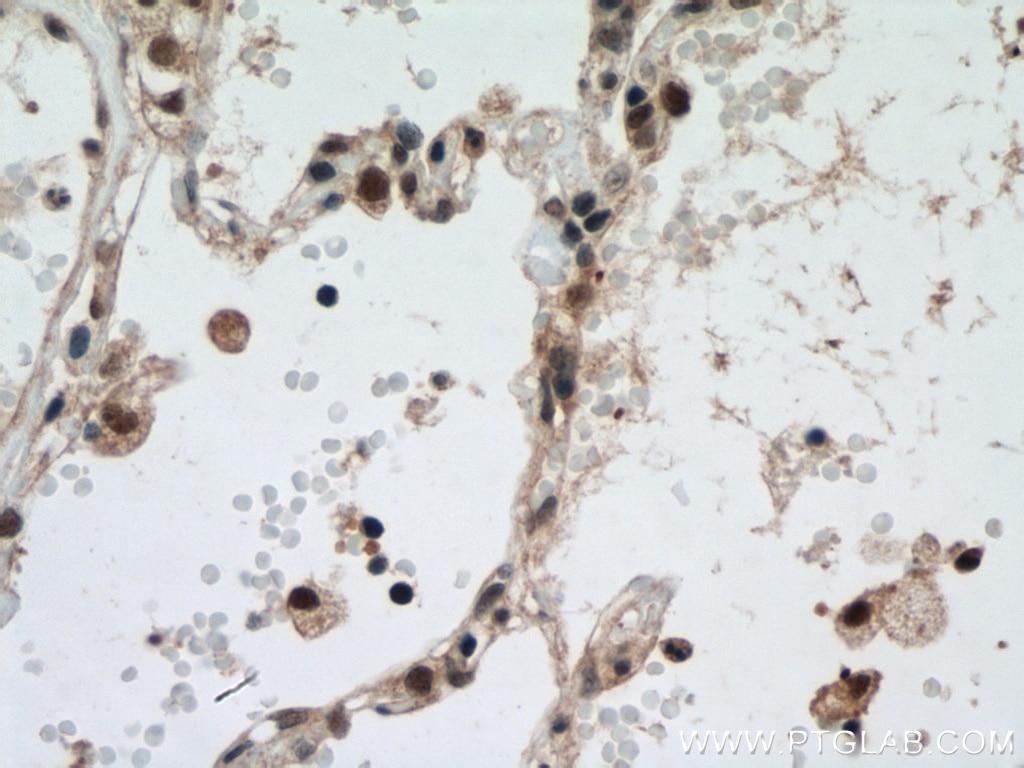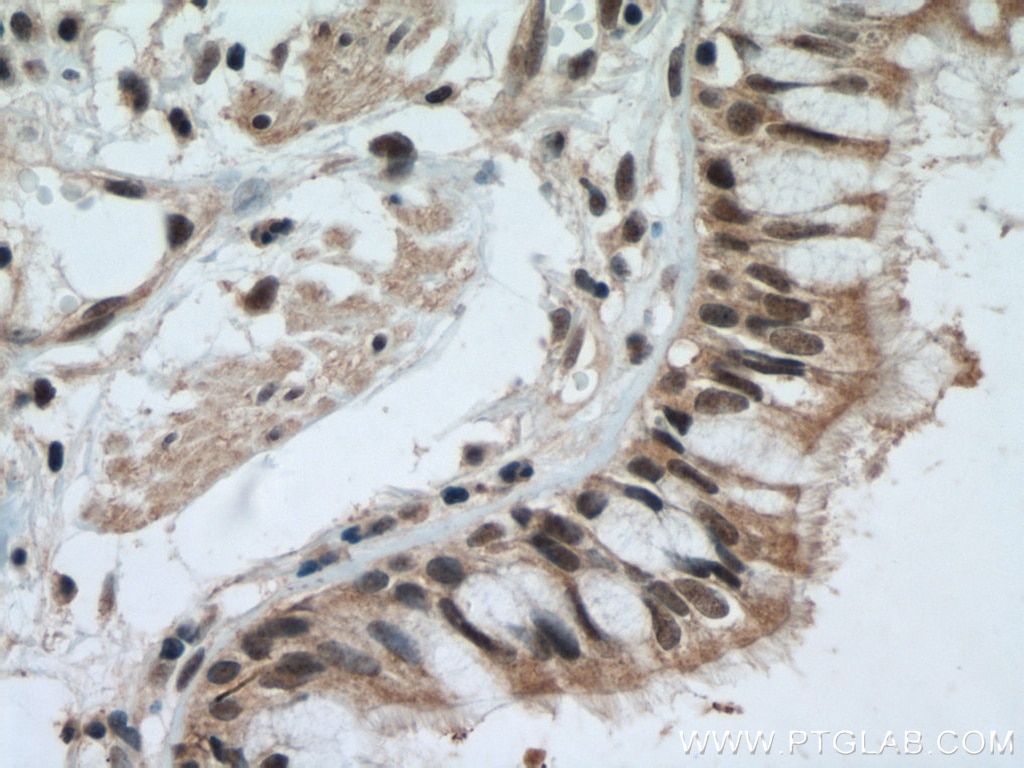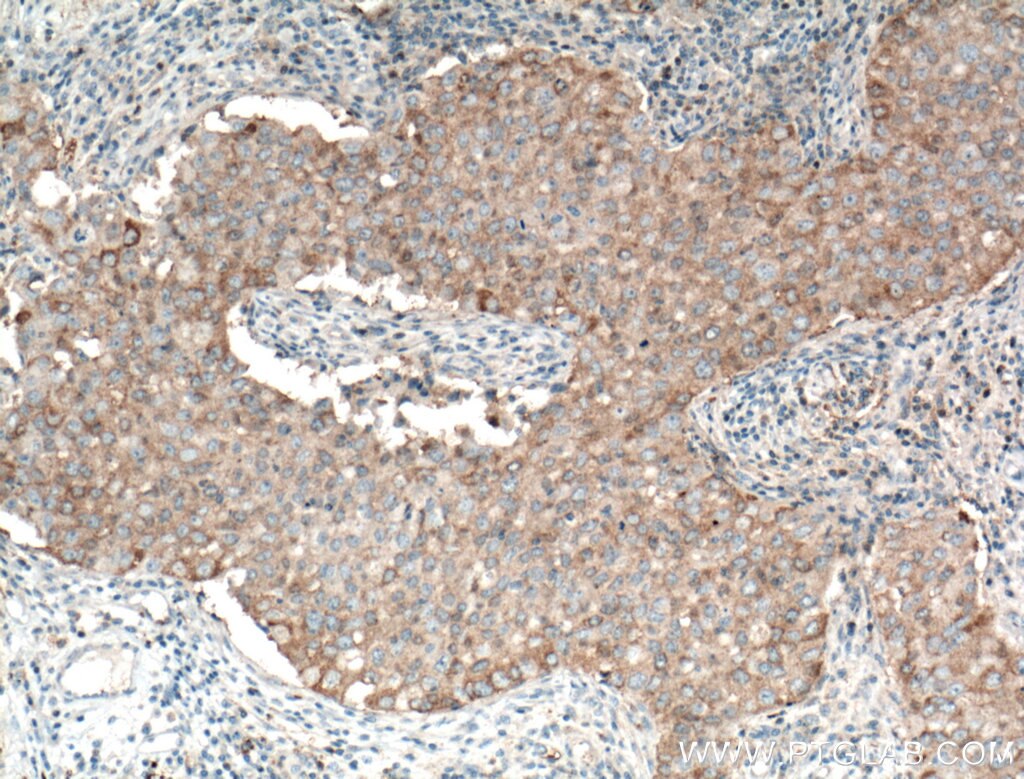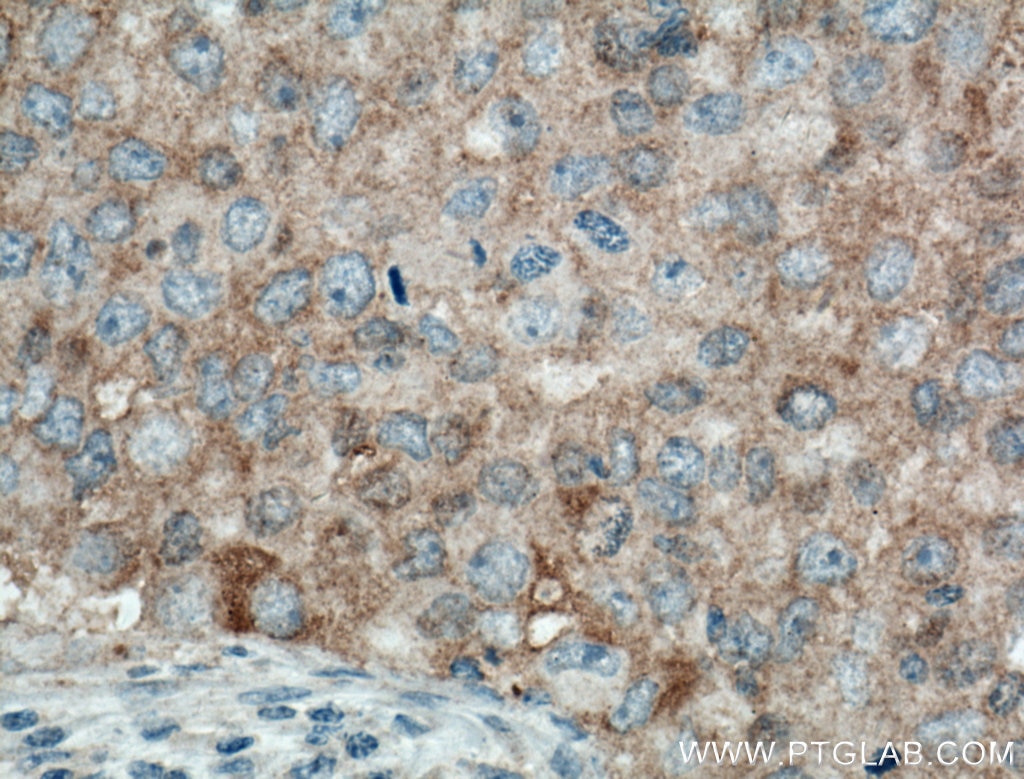Tested Applications
| Positive WB detected in | HepG2 cells, Jurkat cells, MCF-7 cells, U2OS cells |
| Positive IHC detected in | human lung cancer tissue, human breast cancer tissue Note: suggested antigen retrieval with TE buffer pH 9.0; (*) Alternatively, antigen retrieval may be performed with citrate buffer pH 6.0 |
Recommended dilution
| Application | Dilution |
|---|---|
| Western Blot (WB) | WB : 1:500-1:2000 |
| Immunohistochemistry (IHC) | IHC : 1:50-1:500 |
| It is recommended that this reagent should be titrated in each testing system to obtain optimal results. | |
| Sample-dependent, Check data in validation data gallery. | |
Published Applications
| WB | See 1 publications below |
Product Information
15238-1-AP targets MAEA in WB, IHC, ELISA applications and shows reactivity with human samples.
| Tested Reactivity | human |
| Cited Reactivity | human |
| Host / Isotype | Rabbit / IgG |
| Class | Polyclonal |
| Type | Antibody |
| Immunogen | MAEA fusion protein Ag7365 Predict reactive species |
| Full Name | macrophage erythroblast attacher |
| Calculated Molecular Weight | 45 kDa |
| Observed Molecular Weight | 42-45 kDa |
| GenBank Accession Number | BC001225 |
| Gene Symbol | MAEA |
| Gene ID (NCBI) | 10296 |
| RRID | AB_2137505 |
| Conjugate | Unconjugated |
| Form | Liquid |
| Purification Method | Antigen affinity purification |
| UNIPROT ID | Q7L5Y9 |
| Storage Buffer | PBS with 0.02% sodium azide and 50% glycerol , pH 7.3 |
| Storage Conditions | Store at -20°C. Stable for one year after shipment. Aliquoting is unnecessary for -20oC storage. 20ul sizes contain 0.1% BSA. |
Background Information
MAEA(macrophage erythroblast attacher) is a core component of the CTLH E3 ubiquitin-protein ligase complex. MAEA is required for normal cell proliferation and plays a role in erythroblast enucleation during erythrocyte maturation and in the development of mature macrophages. N-terminus MAEA and full-length MAEA are mostly expressed in nuclear and can be detected at low level in the cytoplasm of some cells, while C-terminus MAEA can be detected in the cytoplasm and nucleoli within the nucleus. MAEA mediates the attachment of erythroid cell to mature macrophages which can inhibit erythroid cell apoptosis. The expression of MAEA may be associated with the type 2 diabetes mellitus.(PubMed: 28955747, 24143168, 29911972, 29911972, 30674470, 9763581).
Protocols
| Product Specific Protocols | |
|---|---|
| WB protocol for MAEA antibody 15238-1-AP | Download protocol |
| IHC protocol for MAEA antibody 15238-1-AP | Download protocol |
| Standard Protocols | |
|---|---|
| Click here to view our Standard Protocols |
Publications
| Species | Application | Title |
|---|---|---|
iScience Genome-wide CRISPR-Cas9 screen analyzed by SLIDER identifies network of repressor complexes that regulate TRIM24 |
